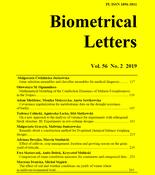
Biometrical Letters Vol. 56(2), 2019, pp. 239-252


Triticale (Triticosecale Wittmack) is obtained through the crossing of wheat (Triticum ssp.) and rye (Secale cereale L.) and is characterized by high yield potential, good health and grain value, and high tolerance to biotic and abiotic stress. Poland is a very important region for progress in triticale breeding, since it is home to most cultivars, and numerous genetic studies on triticale have been carried out. Despite the tremendous interest in triticale among both breeders and researchers, there are no studies assessing the adaptation of cultivars to environmental conditions across growing seasons. This study was conducted to investigate the influence of cultivar, management, location and growing season on grain yield. At the same time, this approach provides a new way to determine whether there is any dependency between the eight seasons, and to find the cause of the yield response to environmental conditions in a given growing season.

triticale, cultivar and environmental interaction, growing seasons, linear mixed models

